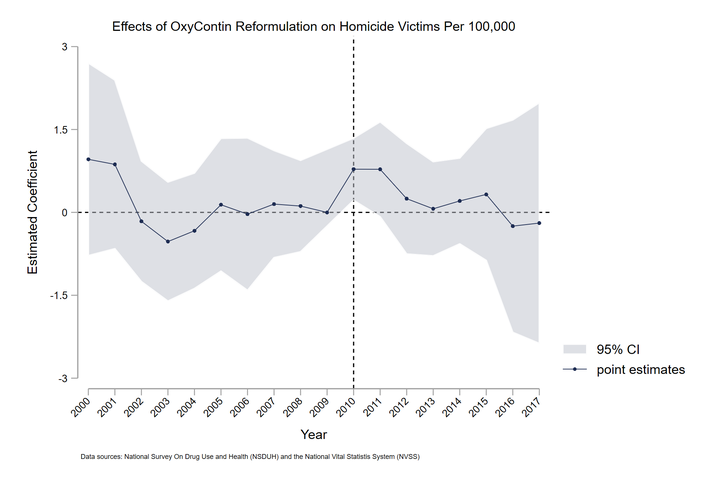The Effects of Oxycontin Reformulation on Homicide
 Image by Bowen Tan, Ph.D. Candidate in Economics
Image by Bowen Tan, Ph.D. Candidate in EconomicsAbstract
This study examines whether a supply-side intervention on prescription drugs, the introduction of an abuse-deterrent formulation of OxyContin, increased the homicide rate in the United States. If so, could this effect be mitigated? First, leveraging cross-state variation in pre-reformulation OxyContin exposure, difference-in-difference estimates show that OxyContin reformulation led to a transitory increase in the homicide rate. This effect is strongest among victims between 15 and 24, which is plausibly due to an increase in illicit drug distribution associated with the rise in post-reformulation demand for illicit opioids. The study then explores the role of medical marijuana laws in moderating post-reformulation homicide rate and finds that medical marijuana legalization is associated with a reduction in post-reformulation homicide rate. This effect is strongest among states where the pre-reformulation OxyContin misuse rates are high.